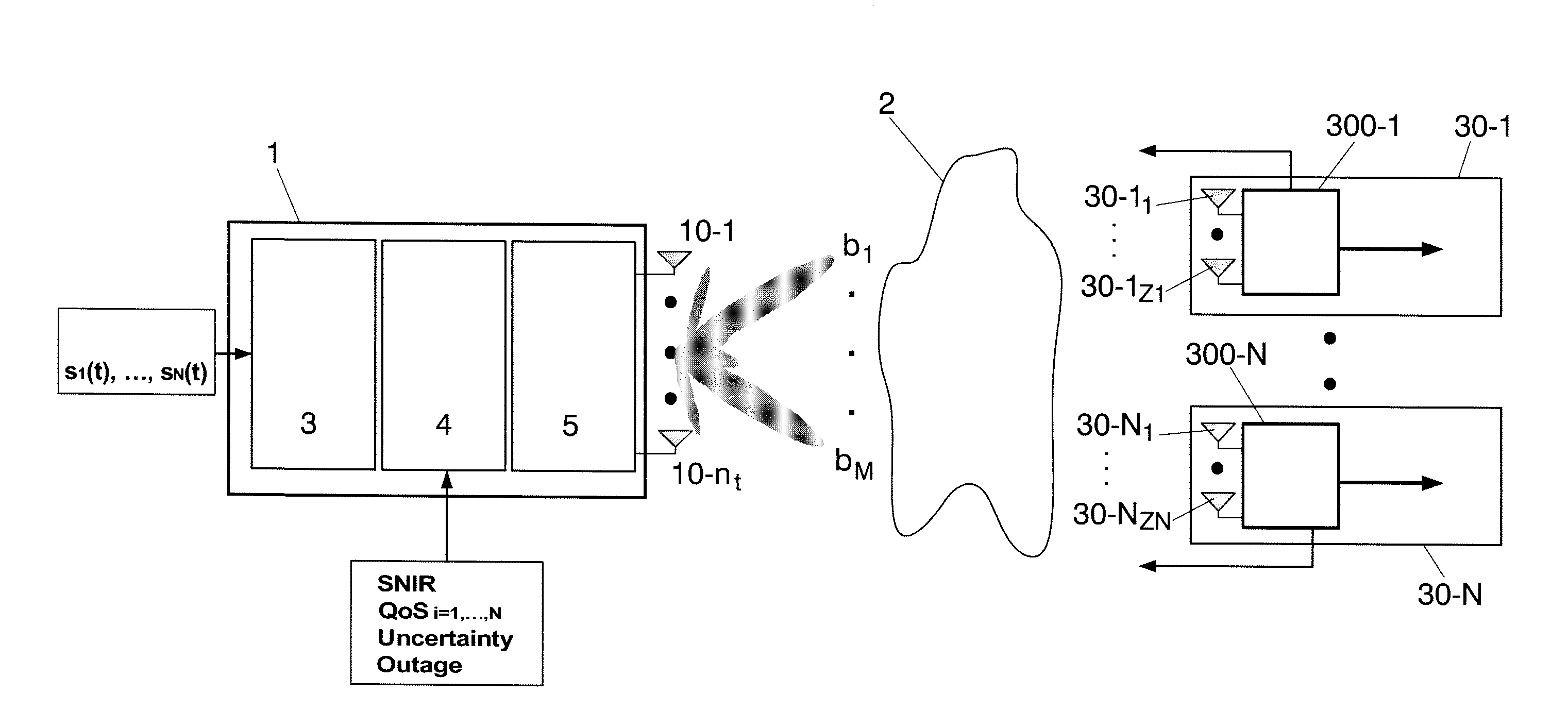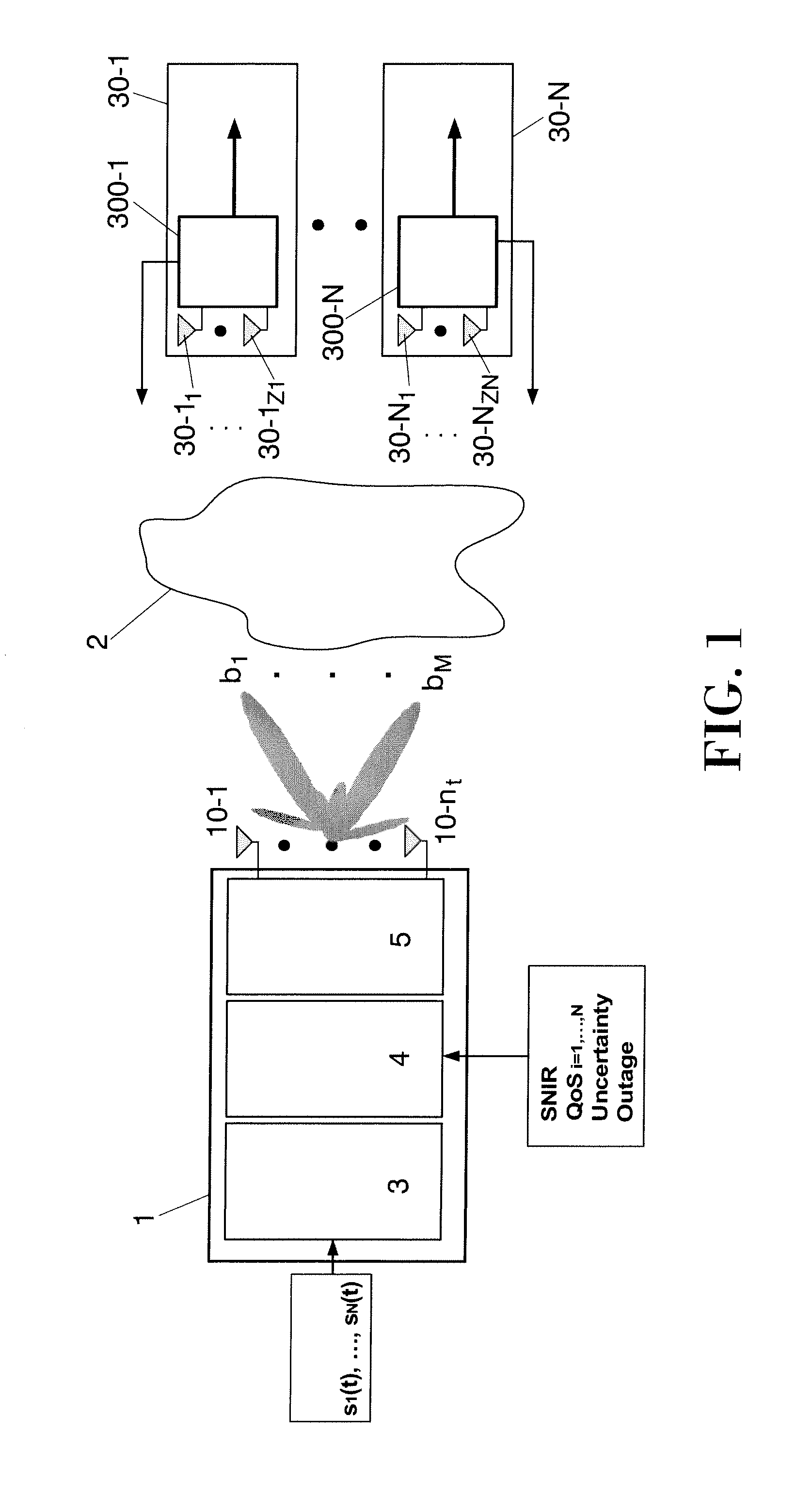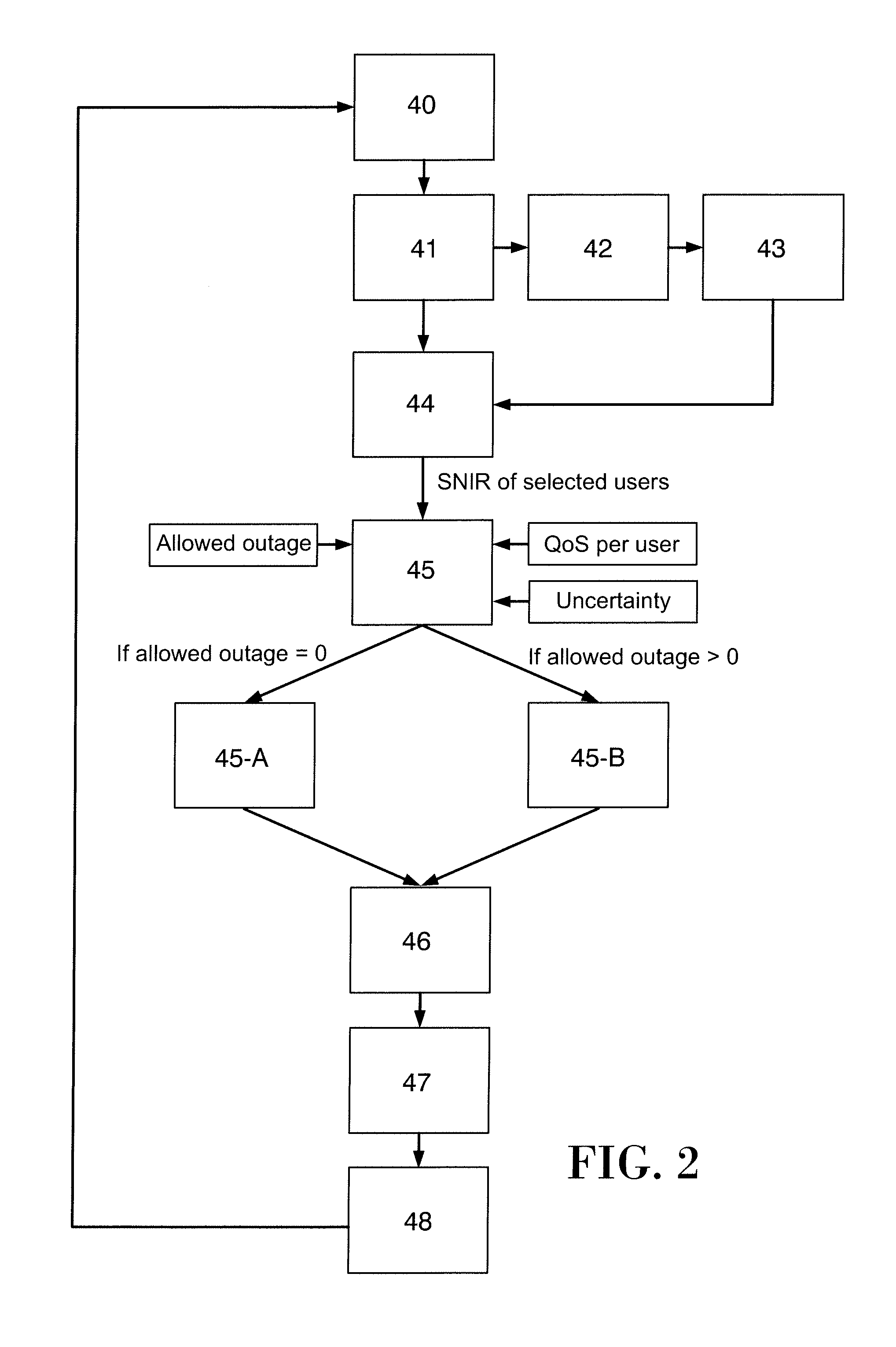Power allocation method in multiantenna systems under partial channel knowledge
a multi-antenna system and partial channel knowledge technology, applied in the field of power allocation, can solve the problems of large system resource loss, difficult to achieve qos minimum rate, and inability to fully understand multi-user mimo systems
- Summary
- Abstract
- Description
- Claims
- Application Information
AI Technical Summary
Benefits of technology
Problems solved by technology
Method used
Image
Examples
first embodiment
[0103]A first embodiment that considers the worst case scenario for the power loading procedure is proposed when hard QoS restrictions are required by the system administrator for all served users.
second embodiment
[0104]A second embodiment that provides outage measures in the resource allocation is presented, where the serving SNIR distribution is considered for the power loading.
[0105]The performance of both schemes is shown through simulations where the benefits of each scheme are highlighted. As both robust transmission schemes do not share the same objectives and requirements, a complete comparison between the two proposed schemes is not possible as the outage scheme provides lower QoS fulfillment than the worst case scheme while the outage scheme works regardless of the uncertainty level. Therefore, it cannot be declared that one of the embodiments is better than the other one. Rather, both schemes are proposed to provide the wireless operator with the freedom to choose the best strategy based on its available resources and demanded restrictions.
PUM
 Login to View More
Login to View More Abstract
Description
Claims
Application Information
 Login to View More
Login to View More - R&D
- Intellectual Property
- Life Sciences
- Materials
- Tech Scout
- Unparalleled Data Quality
- Higher Quality Content
- 60% Fewer Hallucinations
Browse by: Latest US Patents, China's latest patents, Technical Efficacy Thesaurus, Application Domain, Technology Topic, Popular Technical Reports.
© 2025 PatSnap. All rights reserved.Legal|Privacy policy|Modern Slavery Act Transparency Statement|Sitemap|About US| Contact US: help@patsnap.com



